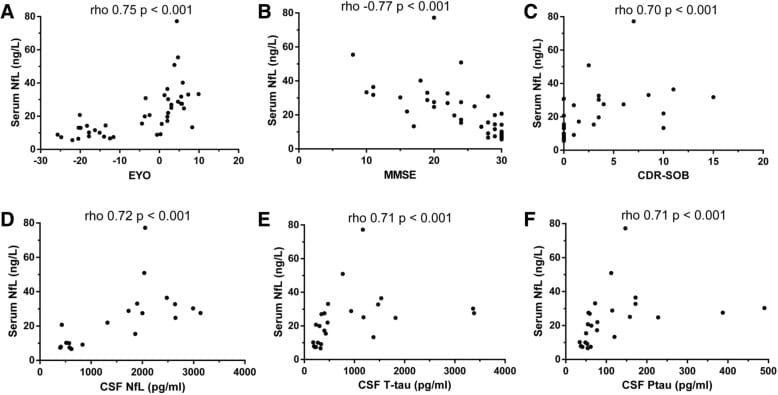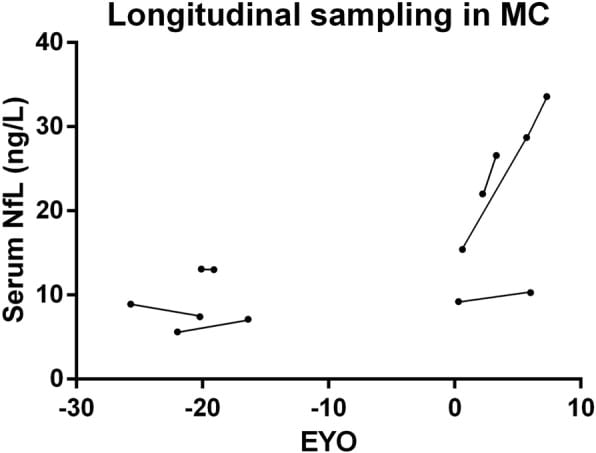Serum Neurofilament Light Levels Correlate With Severity Measures And Neurodegeneration Markers In Autosomal Dominant Alzheimer’s Disease
ALZHEIMER’S RESEARCH AND THERAPY
Sanchez-Valle R, Heslegrave A, Foiani MS, Bosch B, Antonell A, Balasa M, Llado A, Zetterberg H and Fox NC.
Alzheimers Res Ther. 2018 Nov 3;10(1):113
DOI: 10.1186/s13195-018-0439-y
Abstract
Background:
Biomarkers that can track disease onset and progression in autosomal dominant Alzheimer’s disease (ADAD) are needed. We investigate whether serum neurofilament light (NfL) concentration is associated with clinical and cerebrospinal fluid (CSF) markers in ADAD. We also evaluate serum NfL differences between clinical groups.
Methods:
Serum NfL was measured cross-sectionally in 60 individuals from ADAD families using an ultrasensitive immunoassay on the Single molecule array (Simoa) platform and longitudinally in an exploratory study in a subset of six mutation carriers. Spearman coefficients assessed associations between serum NfL and relevant measures. Differences between groups were evaluated by Kruskal-Wallis and Mann-Whitney U tests.
Results:
Forty-two participants were mutation carriers: 22 symptomatic (SMC) and 20 asymptomatic (AMC). Eighteen subjects were non-carriers and cognitively normal (controls (CTR)). Serum NfL correlated with the estimated years from symptoms onset across mutation carriers (rho = 0.75, p < 0.001). In mutation carriers, serum NfL also showed strong correlation with clinical (rho = 0.70, p < 0.001) and cognitive (rho = -0.77, p < 0.001) measures and CSF NfL, total tau and phosphorylated tau levels (rho = 0.72, 0.71, and 0.71, respectively, all p < 0.001). Serum NfL concentration was higher in SMC than in AMC and CTR.
Conclusions:
Serum NfL might be a feasible non-invasive biomarker to track disease onset and severity in ADAD.

